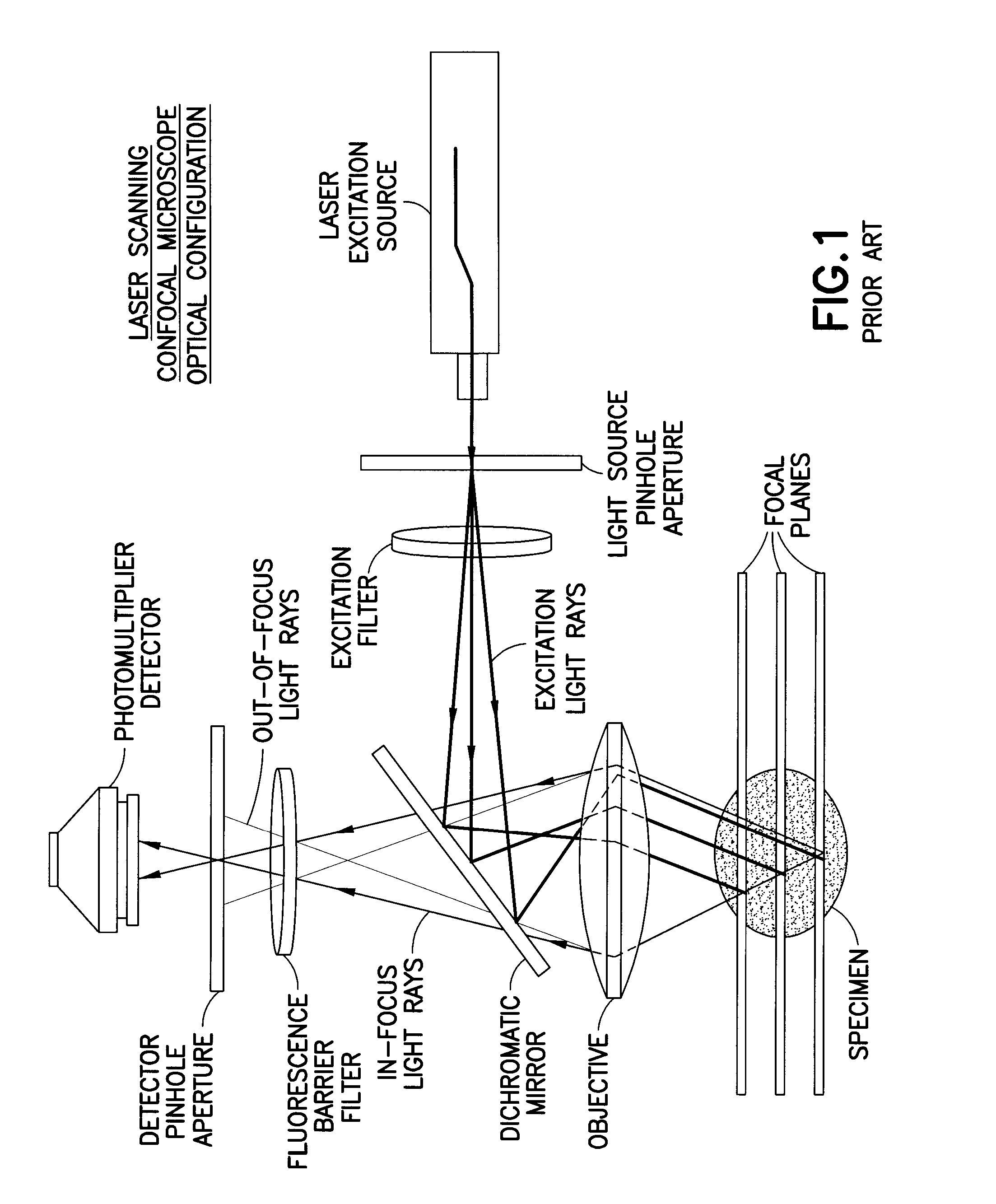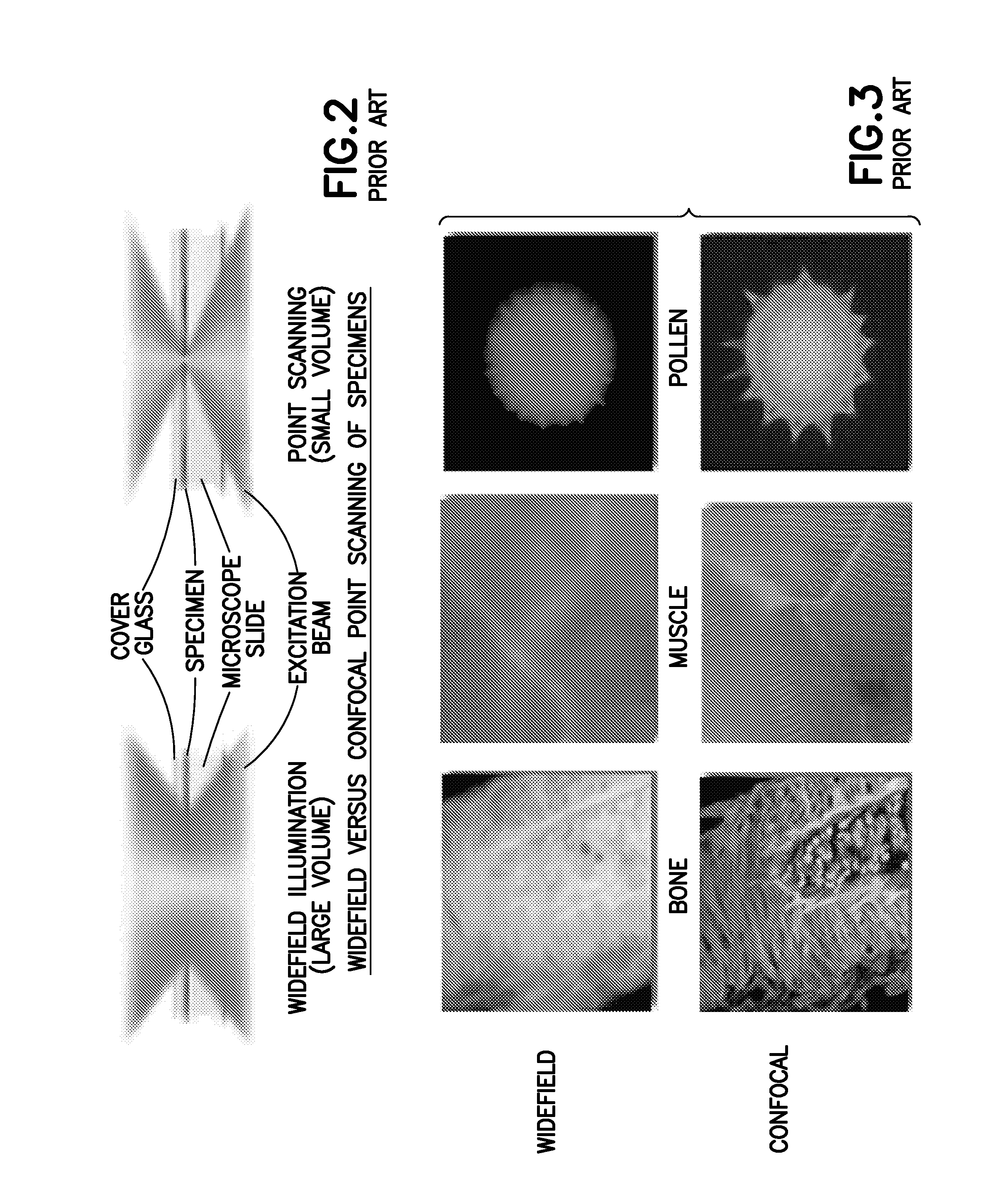Method to quantify discrete pore shapes, volumes, and surface areas using confocal profilometry
a confocal profilometry and discrete pore shape technology, applied in the field of methods for characterizing a sample of porous media, can solve the problems of not being able to disclose porous media, micp is not useful in some pore throats, and confocal microscopy is not commonly used in earth scien
- Summary
- Abstract
- Description
- Claims
- Application Information
AI Technical Summary
Benefits of technology
Problems solved by technology
Method used
Image
Examples
examples
[0101]Referring to FIGS. 22-24, it is noted FIGS. 22 and 23 show scanned views of a polished rock surface, with mineral grains and open pores. It is noted FIG. 22 shows a dolomite imaged using confocal reflected laser microscopy, wherein the black is open porosity, gray is the dolomite mineral and having an objective 20×, scanned area 616×462μ. FIG. 23 shows a pore bodies (total 1921) for entire image from confocal reflected laser profilometry, wherein the Objective is 20× and the area is 616×462μ. The laser confocal scan is saved as a .txt file and loaded into 3D visualization software following Parts [1] through [6] in the previous discussion. FIG. 24 is a cumulative frequency plot of 3D pore-size distribution that compares results for the same rock sample analyzed using laser confocal profilometry, white-light confocal profilometry, and microCTscans. In particular, FIG. 24 shows a cumulative pore-body frequency distribution for dolomite sample shown in ...
PUM
 Login to View More
Login to View More Abstract
Description
Claims
Application Information
 Login to View More
Login to View More - R&D
- Intellectual Property
- Life Sciences
- Materials
- Tech Scout
- Unparalleled Data Quality
- Higher Quality Content
- 60% Fewer Hallucinations
Browse by: Latest US Patents, China's latest patents, Technical Efficacy Thesaurus, Application Domain, Technology Topic, Popular Technical Reports.
© 2025 PatSnap. All rights reserved.Legal|Privacy policy|Modern Slavery Act Transparency Statement|Sitemap|About US| Contact US: help@patsnap.com



